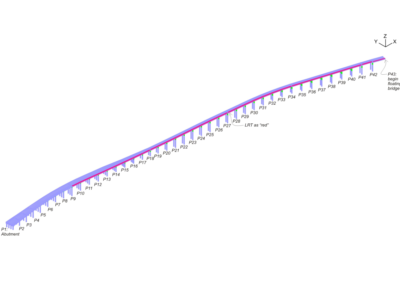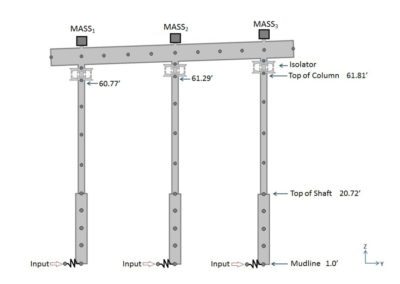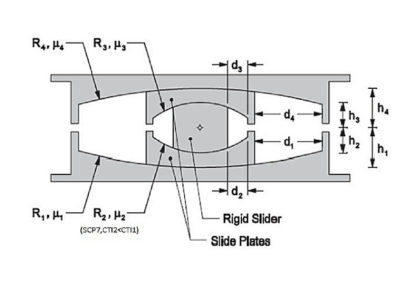WSDOT SR520 Western Approach
Seismic isolation analysis for approach to SR520 floating bridge in SeattleThe SR520 West Approach Bridge North, part of Seattle’s SR520 Replacement/HOV project, is an “essential” bridge, given its critical role in connecting the region and providing an evacuation route. The western approach contains 42 spans which extend from the Montlake Interchange beyond the shore of Lake Washington and ultimately transition onto the SR520 floating bridge. The bridge carries multiple traffic lanes with provision for light rail.
The superstructure is supported by large-diameter, deeply-embedded concrete shafts. Due to the poor soil conditions and high earthquake hazard, seismic isolation bearings were found most effective in minimizing foundation demands, footprint, and cost versus more traditional bearing types. Since both triple friction pendulum (TFP) and lead rubber (LR) bearings were identified as cost-savings measures during preliminary design, SC Solutions developed custom analytical bearing elements for each type considering: 1) multi-directional coupled response 2) column top rotation (i.e.: the base and top of the isolators both rotate) 3) P-Δ within the isolator 4) TFP velocity dependent friction for use in time history analyses.
Since the bridge design relied heavily on bearing performance, the analytical bearing elements were tested thoroughly and compared with alternative methodologies. As part of this verification, SC Solutions identified a significant limitation in the existing TFP bearing formulation typically used by designers which underestimates isolator displacement demands when the isolator is atop a flexible substructure. To overcome this shortcoming, the design team chose to use the custom TFP formulation developed by SC Solutions for substructure seismic demands.
Numerous suites of seismic time history analyses were performed in order to assist the project designers. Of primary interest for design were isolator force and displacement predictions, relative displacement at the bridge expansion joints, and column/shaft demands. These demands were used by designers to check against WSDOT performance objectives for essential bridges, including essentially elastic response for nearly immediate post-earthquake use.



